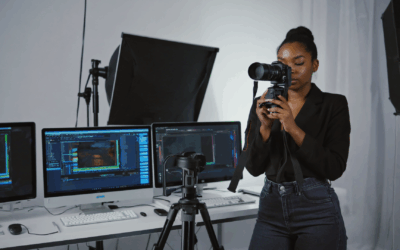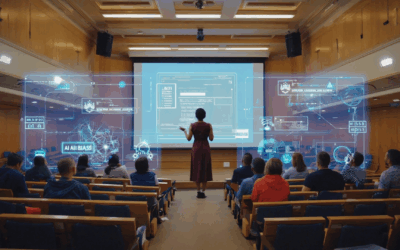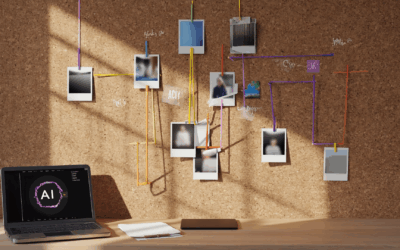The world of photography has come a long way from traditional cameras to digitalization, and now we are embracing the power of artificial intelligence. AI-generated photo compositions have revolutionized the photography industry by providing innovative solutions, better image quality, and enhanced editing capabilities. This article delves into the intricate details of AI-generated photo compositions, how they can benefit photographers, and the role AI plays in the future of image production.
Table of Contents
- Overview: AI and Photography
- Benefits of AI-Generated Photo Compositions
- Understanding AI Algorithms in Photography
- AI-Powered Editing Software
- The Future of AI-Generated Images
- Conclusion
- FAQs
Overview: AI and Photography
Artificial Intelligence (AI) refers to the simulation of human intelligence in machines, enabling them to learn, reason, and improve themselves over time. In the photography sector, AI plays a pivotal role in enhancing image editing capabilities, analyzing data, and providing smart recommendations for the perfect shot.
AI in Image Processing
The integration of AI in image processing enables algorithms to automatically identify objects, segments, and even emotions in images. This feature plays a significant role in social media platforms, e-commerce, facial recognition, and geolocation services.
AI-Powered Cameras
Photographers and enthusiasts are now embracing AI-empowered cameras to capture stunning images. Through scene and subject recognition, these cameras automatically adjust focal length, aperture, and other settings based on the identified subject or scene. This advancement ensures better quality images, especially for inexperienced photographers.
Benefits of AI-Generated Photo Compositions
The integration of AI into photography has led to a plethora of benefits for photographers and the industry as a whole. Some of these benefits include:
- Improved Image Quality: AI-powered cameras and editing software allow photographers to capture and produce images with higher resolution and optimal color balance.
- Efficient Workflow: With AI-based editing software, photographers can automate various editing tasks, reducing time spent on refining images. This streamlined workflow enables them to focus on their creative process.
- Effective Image Categorization: AI image recognition algorithms can quickly identify, tag, and categorize images based on their content, enabling efficient organization and speedy retrieval of photographs.
- New Avenues for Creativity: The use of AI in photography opens up new creative possibilities, allowing photographers to experiment with innovative techniques and produce unique compositions.
Understanding AI Algorithms in Photography
The power of AI in photography lies in the algorithms that drive the technology. These complex algorithms can analyze and process images with remarkable speed and accuracy.
Convolutional Neural Networks (CNN)
CNN is a prominent AI algorithm used in image processing. CNN works by automatically identifying various features in an image and using the information to reconstructthe image with higher accuracy. This deep learning model has proven to be highly effective for tasks like object detection, image segmentation, and image classification.
Generative Adversarial Networks (GAN)
GAN is another significant AI algorithm utilized in photography. It consists of two neural networks, namely the generator and the discriminator. The generator creates new images, while the discriminator determines their authenticity compared to an original dataset. Through a continuous iterative process, GAN generates highly realistic images by refining the output from the generator until the discriminator fails to distinguish between the generated and original images.
AI-Powered Editing Software
Several powerful photo editing tools have emerged to leverage AI algorithms, enhancing the way photographers work with images. Some of these tools include:
- Adobe Photoshop: Adobe has integrated its AI platform, Adobe Sensei, into Photoshop, offering features such as automatic subject selection, image enhancement, and portrait manipulation.
- Luminar AI: This editing software focuses on automating various editing processes using AI. Luminar AI features a user-friendly interface and provides tools like AI Sky Replacement, AI Structure, AI Skin Enhancer, and more.
- Topaz Labs: Topaz Labs offers a suite of AI-powered editing tools, each focusing on specific aspects of image editing. These tools include Topaz Gigapixel AI (image enlargement), Topaz Sharpen AI (image sharpening), Topaz DeNoise AI (noise reduction), and more.
The Future of AI-Generated Images
The evolution of AI-generated images is expected to continue at a rapid pace, driven by advancements in AI algorithms and hardware. Here are some potential developments in the near future:
- Sophisticated AI-Powered Cameras: Cameras with better sensors, computational capabilities, and integrated AI algorithms will further improve and automate the photography experience.
- Realistic Synthetic Images: GANs and other AI models will create increasingly lifelike synthetic images that are indistinguishable from real photographs, opening up new possibilities for creative expression and commercial applications.
- Personalized AI Assistant: Photographers could have their AI-powered assistants, capable of learning their individual styles and preferences over time. These assistants could provide editing suggestions, identify the best shots, and even create custom photo compositions tailored to the photographer’s style.
Conclusion
AI-generated photo compositions are transforming the world of photography by improving image quality, streamlining workflows, and creating new creative avenues. With AI technology rapidly advancing, photographers can expect an even more seamless and futuristic experience in capturing and editing images.
FAQs
- Can AI-generated images replace photographers?
AI-generated images can undoubtedly enhance the creative process and automate many tasks. However, the human element, including artistic vision and intuition, remains crucial in the creation of timeless and captivating photographs. AI is, therefore, an excellent tool to complement photographers’ skills and help them stay competitive in the industry.
- Is AI in photography ethical?
AI in photography raises several ethical concerns, such as plagiarism, privacy violations, and misinformation due to realistic, syntheticimages. It is essential for stakeholders, including photographers, software developers, and policymakers, to address these concerns and establish guidelines for ethical AI use in photography.
- How can I learn more about AI-generated photo compositions and experiment with this technology?
You can start by familiarizing yourself with AI-based editing software like Adobe Photoshop, Luminar AI, and Topaz Labs. Additionally, you can follow industry news, participate in photography forums, and attend workshops or online courses dedicated to AI in photography.




0 Comments